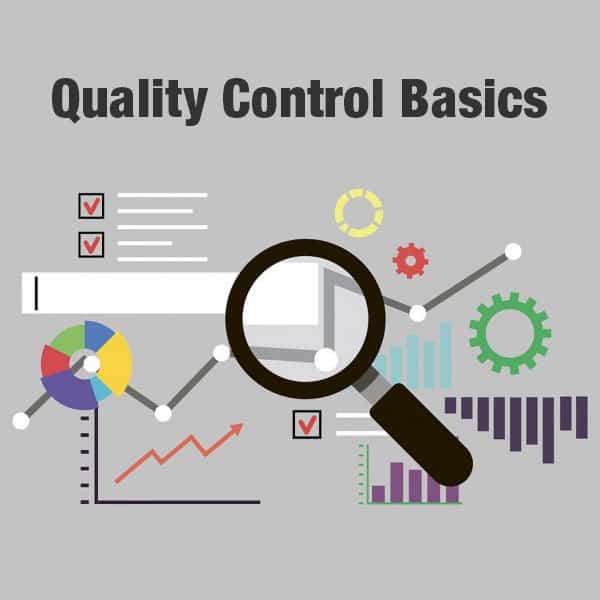Quality control reaches all aspects of our business which results in happy and loyal customers. In this article, we’re going to learn the basics of quality control, what is it, what are types of quality control, what is the benefit of quality control and what’s the difference between quality control and inspection.

QC Definition - What Is Quality Control
Quality control is the most important process in order to make a high quality product, it ensures the standard quality by checking the product during manufacturing at different stages. If the product is not able to meet the desired quality, the product will reject and there will no further process on that unit, it saves unnecessary processing costs on rejected parts. In simpler terms, QC is the process of ensuring that manufactured products meet specific pre-set standards.
Quality control consists of developing, designing, producing, marketing, and servicing products and services with optimum cost-effectiveness and usefulness, which customers will purchase with satisfaction. Quality control is far more than visually inspecting parts at the end of the assembly line.
Quality control can be divided into 7 steps:
(1) Select the control object.
(2) Select the quality characteristic value to be monitored.
(3) Determine specifications and standards, and specify quality characteristics.
(4) Select the monitoring instrument that can accurately measure the characteristic value or the corresponding process parameters, or self-made test means.
(5) Carry out the actual test and record the data.
(6) Analyze the reason of the difference between the actual and the specification.
(7) Take corresponding corrective measures. When the corresponding corrective measures are taken, the process should still be monitored to keep the process at a new control level. Once a new influence factor appears, it needs to analyze the measured data and correct the causes. Therefore, these seven steps form a closed process, which is called “feedback loop”.
Benefits Of Quality Control (QC)
When quality control becomes a way of life, the number of defective products will decrease and as such, over time customer satisfaction will increase leading to enhanced trust and loyalty. And consistent quality control lowers costs for the company since people aren’t wasting time reworking parts and waiting for good parts to be produced and as such, profits increase year over year.
Common Tools For Quality Control
1) Check sheets
2) Graphs
3) Histograms
4) Pareto charts
5) Cause-and-effect diagrams
6) Scatter diagrams
7) Control charts
What Are Types Of Quality Control
1. Pre-production inspection
This form of inspection is required if you want to ensure that the raw materials or components that will be used in the manufacturing process are of high quality. Purchasing lower-cost supplies can significantly boost a factory’s profit margin, and it can also be used to check the processes that the operators are following.
2. During production inspection
This inspection gives you a decent indication of the average product quality and gives you the opportunity to request corrections if any flaws are discovered. However, it is possible that it will take place as soon as the first finished products roll off the production line, but these samples may not be typical of the entire order. As a result, an inspection during production is often performed after 10-30 percent of the items have been completed.
3. Final (pre-shipment) inspection
The conventional quality control method for most importers is to inspect the goods after they have been manufactured and shipped. The inspector will be able to thoroughly inspect every aspect, including counting the entire quantity and validating the packing, before passing the inspection. Final inspections are typically carried out in a hurried manner, shortly prior to shipment. Inspectors can normally begin working after all items have been completed and 80 percent or more of the shipping quantity has been packed in order to prevent creating delays.
4. Loading supervision
In some circumstances, a buyer will want to ensure that the factory ships the correct products, in the correct quantity, and with the proper loading plan before placing an order.
QC Vs Inspection - Difference Between Quality Control And Inspection
We have defined quality control as the total process of ensuring that manufactured goods fulfill the specifications that have been established. QC can be carried out in a variety of ways, depending on the product, the manufacturing process, and the difficulties encountered. Some of the most common methods of quality control include product inspection and lab testing.
Product inspection, on the other hand, is a component of quality control that entails checking that manufactured items satisfy pre-determined specifications. Inspection can take place at many points of the manufacturing process, with the most typical being inspections performed prior to production, throughout production, and prior to export.